“Research shows that testosterone therapy may
be a suitable treatment for postmenopausal women who
are experiencing a loss of sexual desire that is causing…”.1
Umbrella
What may the Testosterone Umbrella include?
Depending on the Source (DotS) this Umbrella may include:
- Androgen
- Male Androgen Hormone
- Male Hormone
- Male Sex Hormone
- Testosterone
- Testosterone Therapy/Treatment
Testosterone
What is testosterone?
DotS the definition of testosterone may vary. The Australian Menopause Society’s (AMS) definition is:
“Testosterone is the male sex hormone found in smaller amounts in women. In women, increased levels of testosterone can lead to acne and hirsutism. Low levels of testosterone in women may contribute to loss of libido”.2
Female Hormone
Is testosterone a female hormone?
On page one in Testosterone Replacement In Menopause: Is Testosterone A Female Hormone? the British Menopause Society (BMS) elaborate on:
“Yes – premenopausal women produce both testosterone and estrogen physiologically. Androgens, including testosterone, are essential for development and maintenance of female sexual anatomy and physiology, and modulation of sexual behaviour”.3
Women, Testosterone Levels and Age
In women, is there an association between testosterone levels and age?
In Libido: Managing & Treating Low Libido – Testosterone Therapy the (Australian) Jean Hailes for Women’s Health (JH) explain:
“Testosterone levels fall as a woman ages, with levels approximately 25% less in her 40s compared to what she had in her 20s. The levels reach their lowest around early 60s then stabilise or slightly rise for the rest of a woman’s life”.4
Low Libido
In women, is testosterone recommended for low libido, low desire or low sex drive?
In Libido: Managing & Treating Low Libido – Testosterone Therapy the JH elaborate on:
 “Low desire and low desire causing distress is very common especially for women around midlife. Some women seeking help from their doctors about their sexual function have low testosterone levels but the relationship between testosterone and libido is complex. Factors like age, mood, general wellbeing and sexual relationships need to be considered”.5
“Low desire and low desire causing distress is very common especially for women around midlife. Some women seeking help from their doctors about their sexual function have low testosterone levels but the relationship between testosterone and libido is complex. Factors like age, mood, general wellbeing and sexual relationships need to be considered”.5
In Low Sex Drive In Women: Diagnosis & Treatment – Treatment: Hormone Therapy the (United States) Mayo Clinic elaborate on:
- “Testosterone. The male hormone testosterone plays an important role in female sexual function, even though testosterone occurs in much lower amounts in women. Testosterone isn’t approved by the FDA for sexual dysfunction in women, but sometimes it’s prescribed off-label to help lift a lagging libido. The use of testosterone in women is controversial. Taking it can cause acne, excess body hair, and mood or personality changes”.6
What is FDA?
FDA can be an abbreviation for the (United States) Food and Drug Administration.
HSDD
In women, what is Hypoactive Sexual Desire Disorder (HSDD)?
DotS the definition of HSDD may vary. In What Is Hypoactive Sexual Desire Disorder (HSDD) In Women? What Causes It? the International Society for Sexual Medicine’s definition is:
“Hypoactive sexual desire disorder (HSDD) is a troublesome condition in which women lose interest in sex. The Society for Women’s Health Research estimates that one in ten women have HSDD, making it one of the most common female sexual health complaints”.7
In Low Sex Drive In Women: Diagnosis & Treatment – Diagnosis the Mayo Clinic explain:
“By definition, you may be diagnosed with hypoactive sexual desire disorder if you frequently lack sexual thoughts or desire, and the absence of these feelings causes personal distress. Whether you fit this medical diagnosis or not, your doctor can look for reasons that your sex drive isn’t as high as you’d like and find ways to help”.8
Postmenopause + HSDD
For postmenopausal women experiencing HSDD, may testosterone therapy be a suitable treatment?
In Libido: Managing & Treating Low Libido – Testosterone Therapy the JH note:
 “Research shows that testosterone therapy may be a suitable treatment for postmenopausal women who are experiencing a loss of sexual desire that is causing them personal distress. This condition is known as hypoactive sexual desire disorder (HSDD)”.9
“Research shows that testosterone therapy may be a suitable treatment for postmenopausal women who are experiencing a loss of sexual desire that is causing them personal distress. This condition is known as hypoactive sexual desire disorder (HSDD)”.9
On page one in Testosterone for Women: Why Use Testosterone? the British Women’s Health Concern elaborate on:
“The current recommended reason is for persistent low sex drive (Hypoactive sexual desire disorder, HSDD) in women after all other possible factors, including taking adequate estrogen, have been addressed. Even with this indication, it does not help everyone”.10
On page one in Testosterone and the Menopause: Testosterone Replacement In Women, published July 2022, the European Menopause and Andropause Society note:
“HSDD after the menopause is the only evidence-based indication for testosterone in women”.11
In The 2023 Practitioner’s Toolkit for Managing Menopause: Management – MHT Formulations and Options: Testosterone published online 01 December 2023, the authors explain:
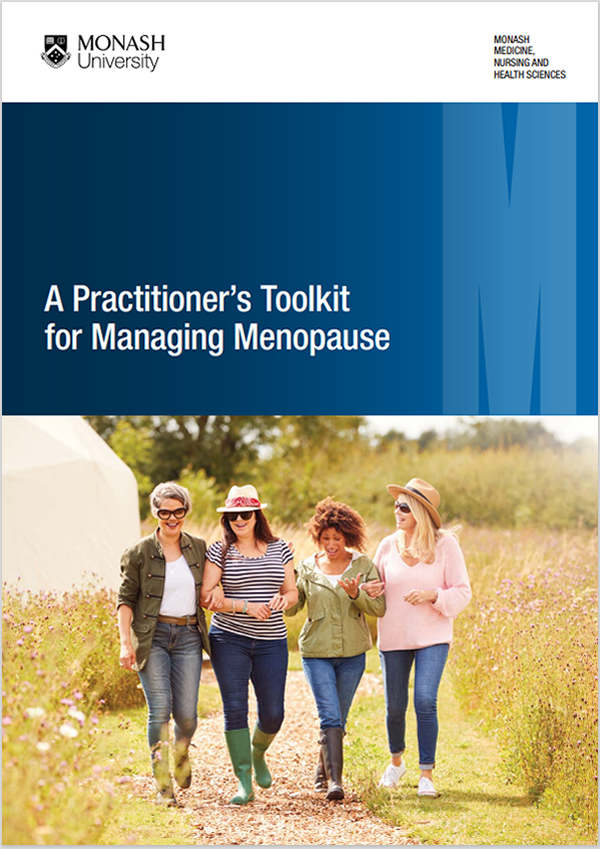 “Testosterone is not a standard component of MHT. The only evidence-based indication for testosterone therapy is for the treatment of postmenopausal women who experience loss of sexual desire that causes them to experience concern/distress. When prescribed for this indication, treatment should be transdermal and ideally with a preparation formulated for women. Alternatively, a modified dose of a regulatory-approved male testosterone therapy could be used. With both options, women should be monitored for evidence of clinical or biochemical androgen excess. Compounded testosterone formulations are not recommended due to lack of evidence of safety or efficacy. Detailed guidance regarding testosterone use in women can be found in the Global Consensus Position Statement for Testosterone use in Women”.12
“Testosterone is not a standard component of MHT. The only evidence-based indication for testosterone therapy is for the treatment of postmenopausal women who experience loss of sexual desire that causes them to experience concern/distress. When prescribed for this indication, treatment should be transdermal and ideally with a preparation formulated for women. Alternatively, a modified dose of a regulatory-approved male testosterone therapy could be used. With both options, women should be monitored for evidence of clinical or biochemical androgen excess. Compounded testosterone formulations are not recommended due to lack of evidence of safety or efficacy. Detailed guidance regarding testosterone use in women can be found in the Global Consensus Position Statement for Testosterone use in Women”.12
Australia, 19 June 2023
Presently, is Australia the only country in the world with an approved testosterone formulation specifically for women?
In Advancing Menopause Care In Australia: Barriers and Opportunities: The Role of Testosterone, published online 19 June 2023, the authors elaborate on:
“Presently, Australia is the only country in the world with an approved testosterone formulation specifically for women. Its prescribing indication is in line with the evidence of efficacy of transdermal testosterone for the treatment of post‐menopausal women with low sexual desire associated with personal distress (hypoactive sexual desire disorder). Important caveats on the evidence are that…”.13
BMS Statement on Testosterone, 02 March 2023
What does the BMS Statement on Testosterone, 02 March 2023, elaborate on for the treatment of low libido?
The BMS Statement on Testosterone elaborates on:
Levels of testosterone in women decline between the ages of 20 and 40. By menopause the levels have plateaued out and are stable. Testosterone is produced by the adrenal glands and the ovaries in peri and post-menopausal women. Testosterone is not the third component of HRT and promoting misinformation is creating unrealistic expectations for women, some of whom have challenging social circumstances. Managing women with hypoactive sexual desire disorder, necessitates a biopsychosocial approach. It is important to consider contributory factors which include vulvovaginal atrophy and relationship issues”.14
Testosterone Links
Where may I find Links related to testosterone?
Your Country may have Links similar to:
- Advancing Menopause Care In Australia: Barriers and Opportunities – The Role of Testosterone Treatment
- BMS Statement on Testosterone
- BMS TV: Testosterone Explained
- No Evidence Testosterone Helps Treat Pre-Menopausal Symptoms, An Expert Says
- Testosterone Use for Hypoactive Sexual Desire Disorder In Postmenopausal Women
- The 2023 Practitioner’s Toolkit for Managing Menopause: Management – MHT Formulations and Options: Testosterone [01 December 2023]
Low Mood and Depression
Is there a role for testosterone therapy for low mood or depression?
In Looking After Yourself: Sex and Relationships – Managing Low Libido: What Can Affect Your Sex Life? Testosterone Therapy the JH explain:
On page four in the Joint Position Statement By the British Menopause Society, Royal College of Obstetricians and Gynaecologists and Society for Endocrinology on Best Practice Recommendations for the Care of Women Experiencing the Menopause, first published online 10 June 2022, one of the recommendations is:
In Advancing Menopause Care In Australia: Barriers and Opportunities: The Role of Testosterone, published online 19 June 2023, the authors explain:
Health Care Provider
What if I am considering testosterone therapy?
If you are considering testosterone therapy, it may be in your best interest to choose to talk to your health care provider about this.
“If testosterone therapy is going to improve your libido, you will start to notice this after about four weeks. If there is no improvement after six months, you should stop testosterone treatment”.18
Health Topics A-Z
Where may I find Health Topics A-Z related to Testosterone?
In Health Topics A-Z you may find:
Links
Where may I find Links related to Testosterone?
Your Country may have Links similar to:
Links
This Links List to third party websites is neither comprehensive nor exhaustive. Inclusion on this Links List does not imply endorsement or recommendation. Non-inclusion on this Links List does not imply non-endorsement or non-recommendation. Third party websites are not under the control of Meno Martha International Menopause Directory. Third party websites may contain explicit medical images and/or sexual references. Please read Meno Martha International Menopause Directory’s Links Policy before proceeding to a Link. Please contact Webmaster if you experience a problem with a Link.New or Updated
- BMS Statement on Testosterone
- BMS TV: Testosterone Explained
 Don’t Believe the Hype. Menopausal Women Don’t All Need To Check – or Increase – Their Testosterone Levels
Don’t Believe the Hype. Menopausal Women Don’t All Need To Check – or Increase – Their Testosterone Levels- No Evidence Testosterone Helps Treat Pre-Menopausal Symptoms, An Expert Says
- Symptoms of Low Testosterone In Women (and Reasons Why It Might Be Low)
- The 2023 Practitioner’s Toolkit for Managing Menopause [01 December 2023]
- Testosterone Use for Hypoactive Sexual Desire Disorder In Postmenopausal Women
- Advancing Menopause Care In Australia: Barriers and Opportunities – The Role of Testosterone Treatment
- Association Between Testosterone and Cognitive Performance In Postmenopausal Women: A Systematic Review of Observational Studies
- BMS Comment on Channel 4 Programme: Davina McCall: Sex, Myths and the Menopause
- BMS Statement on Testosterone
- BMS TV: Testosterone Explained
- Causes of Low Libido In Postmenopausal Women [Video]
- Deciding About Hormone Therapy Use
- Don’t Believe the Hype. Menopausal Women Don’t All Need To Check – or Increase – Their Testosterone Levels
- Dr Louise Newson: The Truth About the Menopause & HRT
- Effects of Testosterone Therapy for Women: A Systematic Review and Meta-Analysis Protocol
- Find A Menopause Practitioner [United States and Other]
- Find An AMS Doctor [Australasian Menopause Society i.e. Australia and New Zealand]
- Find Your Nearest BMS Menopause Specialist [British Menopause Society]
- Global Consensus Position Statement on the Use of Testosterone Therapy for Women
- I Forgot To Ask the Doctor – E9: The Menopause: Can Every Woman That Wants It Have HRT?
- International Society for Sexual Medicine: Sexual Health Topics
- International Society for the Study of Women’s Sexual Health Clinical Practice Guideline for the Use of Systemic Testosterone for Hypoactive Sexual Desire Disorder In Women
- International Society for the Study of Women’s Sexual Health: Find A Provider
- Joint Position Statement By the British Menopause Society, Royal College of Obstetricians and Gynaecologists and Society for Endocrinology on Best Practice Recommendations for the Care of Women Experiencing the Menopause
- Later Years (Around 50 Years and Over): Menopause and Post Menopause Health – Sexual Wellbeing, Intimacy and Menopause [+ Video: Menopause Is the End of Your Sex Life]
- Later Years (Around 50 Years and Over): Menopause and Post Menopause Health – Signs and Symptoms of Menopause [+ Video: Talking Menopause With Your GP]
- Later Years (Around 50 Years and Over): Menopause and Post Menopause Health – Supporting Someone Through the Menopause [+ Video: Men Don’t Need To Know About Menopause]
- Let’s Talk About Perimenopause
- Libido and Testosterone Therapy – Podcast
- Looking After Yourself: Managing Low Libido – Testosterone Therapy
- Low Sex Drive In Women
- Low Sex Drive In Women: Diagnosis & Treatment
- Low Testosterone Levels In Women Associated With Double the Risk of Cardiac Events
- Managing Your Symptoms
- Menopause
- Menopause
- Menopause
- Menopause Management Options
- Menopause Map: Downloadable Resources – My Personal Path Print Tools: Questions for Your Health Care Provider
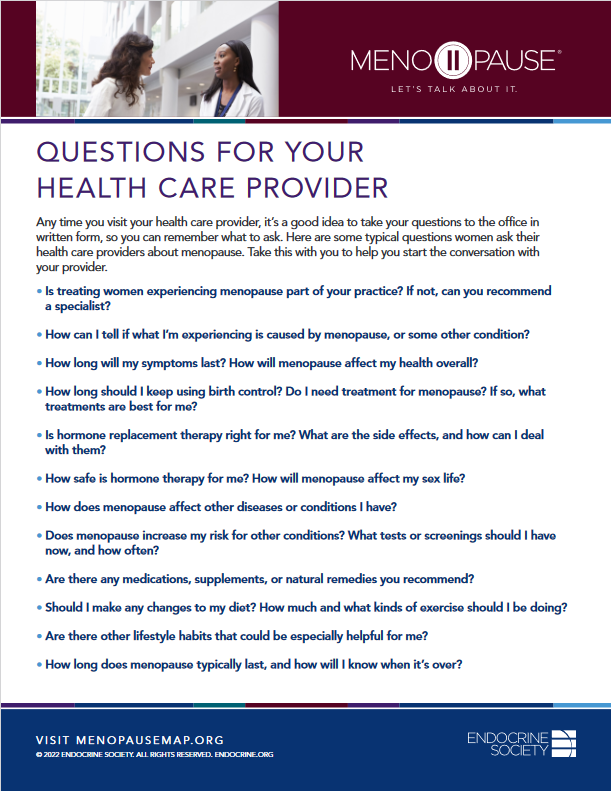
- Menopause Map: Downloadable Resources – My Personal Path Print Tools: Symptom Tracker
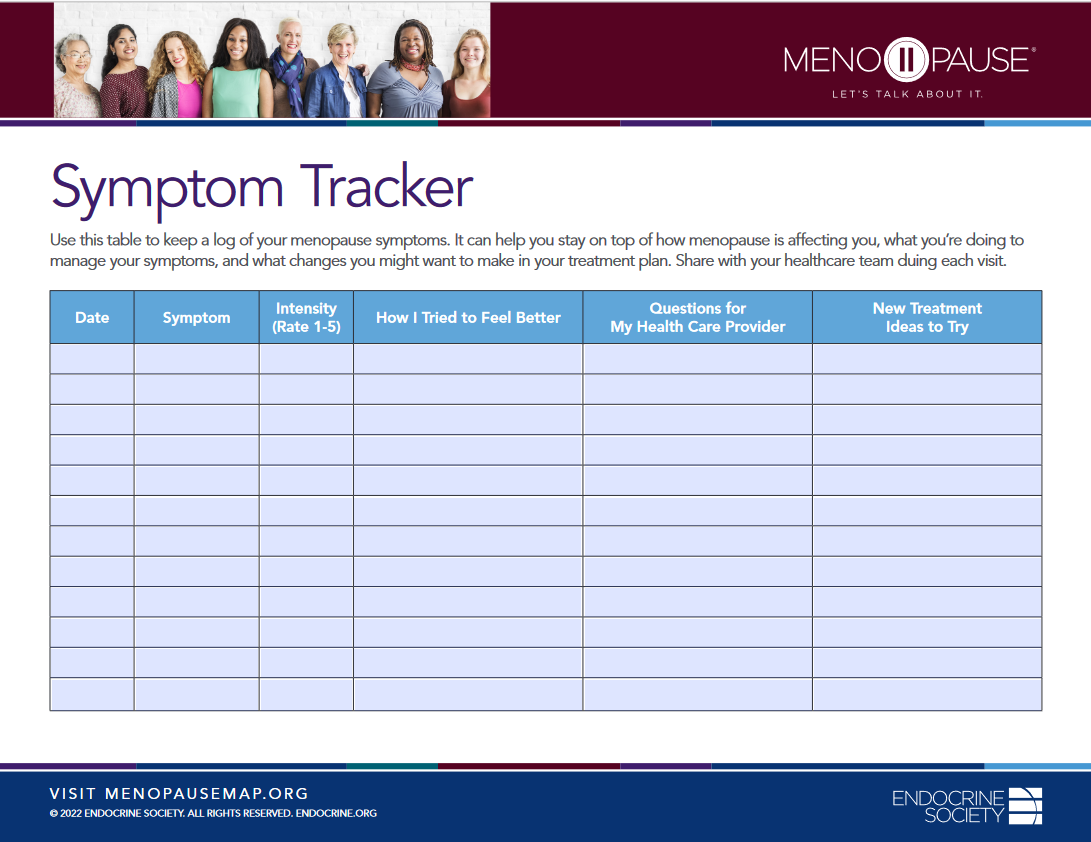
- Menopause Patient Information [Videos] 2. Talking To Your GP About Menopause
- Menopause Preparedness Toolkit Video Series: Common Conditions Associated With Menopause and Midlife
- Menopause Preparedness Toolkit: A Woman’s Empowerment Guide
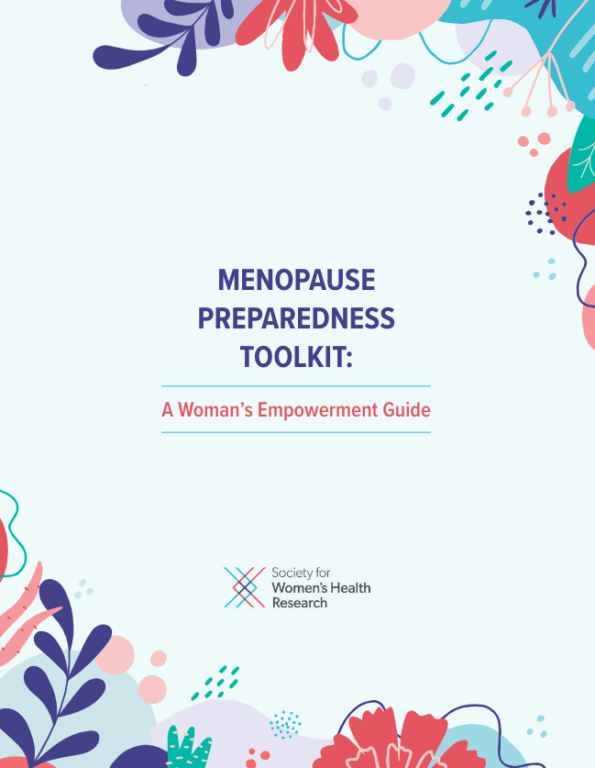
- Menopause Ruining Your Sex Life?
- Menopause Symptoms: Mayo Clinic Expert Outlines Hormone and Nonhormonal Therapies
- Menopause Treatments: What Works, What Doesn’t
- Menopause What Are the Symptoms?
- Menopause and Sexuality
- Menopause: Understanding the Changes and Finding Relief | Dr Susan Davis | The Proof Podcast EP 256
- NIHR Testosterone Trial [National Institute of Health Research, United Kingdom]
- National Center for Complementary and Integrative Health: Herbs At A Glance
- National Center for Complementary and Integrative Health: How Safe Is This Product or Practice?
- Navigating Menopause: Expert Insights and Solutions | Dr Susan Davis | The Proof Podcast EP 245
- Navigating Menopause Together: How Partners Can Help
- No Evidence Testosterone Helps Treat Pre-Menopausal Symptoms, An Expert Says
- Non-Estrogen Treatments for Menopausal Symptoms
- Nonhormone Treatments for Hot Flashes and Night Sweats
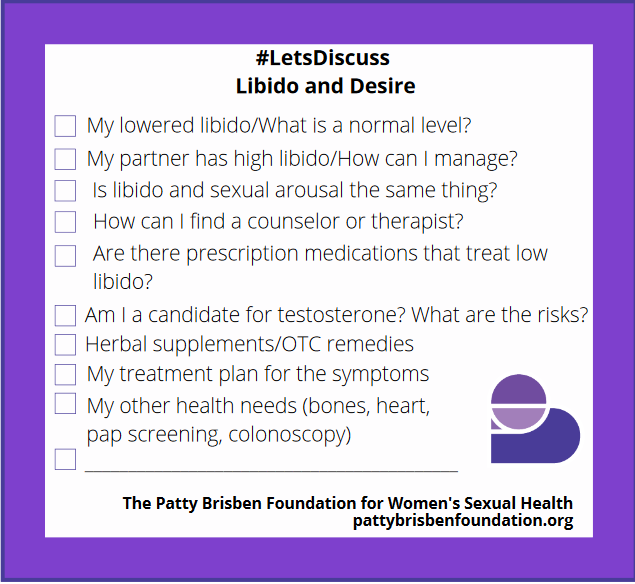
- Patty Brisben Foundation for Women’s Sexual Health: Guide To Sexual Health Providers
- Perimenopause
- Postmenopause
- Prescribing Testosterone and DHEA: The Role of Androgens In Women
- Safety and Efficacy of Testosterone for Women: A Systematic Review and Meta-Analysis of Randomised Controlled Trial Data
- Sex & Sexual Health
- Sex and Menopause: Treatment for Symptoms
- Sexual Difficulties In the Menopause: Hormones and Sexual Function – Testosterone
- Sexual Health: In-Depth – Testosterone Therapy – Potential Benefits and Risks As You Age
- Supporting A Loved One Through Menopause
- Symptoms of Low Testosterone In Women (and Reasons Why It Might Be Low)
- Testosterone May Significantly Improve Sexual Function and Sexual Wellbeing In Postmenopausal Women
- Testosterone Replacement In Menopause
- Testosterone Therapy In Women: A Clinical Challenge
- Testosterone Therapy In Women: Does It Boost Sex Drive?
- Testosterone Use for Hypoactive Sexual Desire Disorder In Postmenopausal Women
- Testosterone Use for Hypoactive Sexual Desire Disorder In Postmenopausal Women [Podcast]
- Testosterone and the Menopause
- Testosterone for Menopause: Why Women Face Difficulties Accessing Treatment
- Testosterone for Women
- The 2023 Practitioner’s Toolkit for Managing Menopause
- The Association Between Testosterone and Depression In Postmenopausal Women: A Systematic Review of Observational Studies
- The Truth About Menopause Supplements | Dr Sarah Berry
- Therapy for the Effects of Menopause
- Tips To Help Manage Menopause Symptoms
- Top Tips for Talking To Your Doctor
- Using Natural Therapies In the Menopause Transition – Webinar
- Vaginal Dryness
- Vaginal Dryness After Menopause: How To Treat It?
- Vaginal Dryness: What To Do About It
- Video Series-2022: Discussing Sexual Health Concerns With Your Health Care Professional
- Video Series-2022: Perimenopause, Signs, Symptoms, and Solutions
- Video Series-2023: NAMS 2023 Nonhormone Therapies Position Statement for Bothersome Menopause Symptoms
- Video Series-2023: New FDA-Approved Nonhormone Option for the Treatment of Hot Flashes
- Video & Podcast Library: Testosterone and Women
- Videos and Podcasts: Videos – Interviews: A Simple Approach To Menopause: The Menopause Quick Six (www.MQ6.ca)
- Videos and Podcasts: Videos – Interviews: Is Testosterone the Answer To Low Libido?
- Webinars: Previous – Lessons From the Global Consensus on Testosterone for Women
- What Everyone Should Know About Menopause Symptoms
- What Is Hypoactive Sexual Desire Disorder (HSDD) In Women? What Causes It?
- What Side Effects May Occur When Women Take Testosterone?
- What’s New – The Use of Testosterone In Women [Video] [March 2021]
- Why Didn’t Anyone Tell Me This? Episode 3: Dr Annice Mukherjee: Your Essential Menopause Toolkit
- World Menopause Day 2019: Global Consensus Position Statement on the Use of Testosterone Therapy for Women: A White Paper [Multiply Languages]
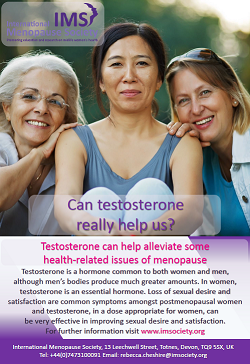 World Menopause Day 2019: Patient Information Leaflet: Testosterone for Women At Midlife [Multiply Languages]
World Menopause Day 2019: Patient Information Leaflet: Testosterone for Women At Midlife [Multiply Languages]
Sources
Where may I find the Sources quoted?
You may find the Sources quoted at:
Sources
- Libido: Managing & Treating Low Libido – Testosterone Therapy. Last Updated: 26 August 2023 | Last Reviewed: 02 December 2013. Jean Hailes for Women’s Health https://www.jeanhailes.org.au/health-a-z/sex-sexual-health/libido Accessed: 14 November 2023
- Glossary of Terms: Testosterone. Content Updated: February 2022. Australasian Menopause Society https://www.menopause.org.au/hp/information-sheets/381-glossary-of-terms Accessed: 12 February 2024
- Testosterone Replacement In Menopause: 2. What Is Its Role In Women? Publication Date: December 2022:1. British Menopause Society https://thebms.org.uk/publications/tools-for-clinicians/testosterone-replacement-in-menopause/ Accessed: 12 February 2024
- Libido: Managing & Treating Low Libido – Testosterone Therapy. Last Updated: 26 August 2023 | Last Reviewed: 02 December 2013. Jean Hailes for Women’s Health https://www.jeanhailes.org.au/health-a-z/sex-sexual-health/libido Accessed: 14 November 2023
- Libido: Managing & Treating Low Libido – Testosterone Therapy. Last Updated: 26 August 2023 | Last Reviewed: 02 December 2013. Jean Hailes for Women’s Health https://www.jeanhailes.org.au/health-a-z/sex-sexual-health/libido Accessed: 14 November 2023
- Low Sex Drive In Women: Diagnosis & Treatment – Hormone Therapy. 24 February 2022. Mayo Clinic https://www.mayoclinic.org/diseases-conditions/low-sex-drive-in-women/diagnosis-treatment/drc-20374561 Accessed: 12 February 2024
- What Is Hypoactive Sexual Desire Disorder (HSDD) In Women? What Causes It? International Society for Sexual Medicine https://www.issm.info/sexual-health-qa/what-is-hypoactive-sexual-desire-disorder-hsdd-in-women-what-causes-it? Accessed: 12 February 2024
- Low Sex Drive In Women: Diagnosis & Treatment – Diagnosis. 24 February 2022. Mayo Clinic https://www.mayoclinic.org/diseases-conditions/low-sex-drive-in-women/diagnosis-treatment/drc-20374561 Accessed: 12 February 2024
- Libido: Managing & Treating Low Libido – Testosterone Therapy. Last Updated: 26 August 2023 | Last Reviewed: 02 December 2013. Jean Hailes for Women’s Health https://www.jeanhailes.org.au/health-a-z/sex-sexual-health/libido Accessed: 14 November 2023
- Testosterone for Women: Why Use Testosterone? Publication Date: February 2022:1. British Women’s Health Concern https://www.womens-health-concern.org/help-and-advice/factsheets/testosterone-for-women/ Accessed: 12 February 2024
- Testosterone and the Menopause: Testosterone Replacement In Women. 2022:1. European Menopause and Andropause Society https://emas-online.org/wp-content/uploads/2022/07/Testosterone-and-the-menopause.pdf Accessed: 12 February 2024
- Davis, S. R., Taylor, S., Hemachandra, C., Magraith, K., Ebeling, P. R., Jane, F., and Islam, R. M. The 2023 Practitioner’s Toolkit for Managing Menopause: Definitions. Published Online: 01 December 2023 https://www.tandfonline.com/doi/full/10.1080/13697137.2023.2258783 Accessed: 12 February 2024
- Davis S. R., and Magraith, K. Advancing Menopause Care In Australia: Barriers and Opportunities: The Role of Testosterone. Published Online: 19 June 2023. https://www.mja.com.au/journal/2023/218/11/advancing-menopause-care-australia-barriers-and-opportunities Accessed: 12 February 2024
- BMS Statement on Testosterone. 02 March 2023. British Menopause Society https://thebms.org.uk/2023/03/bms-statement-on-testosterone/ Accessed: 12 February 2024
- Looking After Yourself: Sex and Relationships – Managing Low Libido: What Can Affect Your Sex Life? Testosterone Therapy. Last Updated: 19 January 2024 | Last Reviewed: 19 August 2022. Jean Hailes for Women’s Health https://www.jeanhailes.org.au/health-a-z/menopause/looking-after-yourself#sex-and-relationships Accessed: 12 February 2024
- Hamoda, H., Mukherjee, A., Morris, E., Baldeweg, S. E., Jayasena, C. N., Briggs, P., Moger, S. Joint Position Statement By the British Menopause Society, Royal College of Obstetricians and Gynaecologists and Society for Endocrinology on Best Practice Recommendations for the Care of Women Experiencing the Menopause. First Published Online 10 June 2022:4. https://journals.sagepub.com/doi/full/10.1177/20533691221104879 Accessed: 12 February 2024
- Davis S. R., and Magraith, K. Advancing Menopause Care In Australia: Barriers and Opportunities: The Role of Testosterone. Published Online: 19 June 2023. https://www.mja.com.au/journal/2023/218/11/advancing-menopause-care-australia-barriers-and-opportunities Accessed: 12 February 2024
- Looking After Yourself: Sex and Relationships – Managing Low Libido: What Can Affect Your Sex Life? Testosterone Therapy – How Is Testosterone Used? Last Updated: 19 January 2024 | Last Reviewed: 19 August 2022. Jean Hailes for Women’s Health https://www.jeanhailes.org.au/health-a-z/menopause/looking-after-yourself#sex-and-relationships Accessed: 12 February 2024



